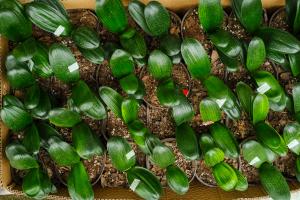How to Water Indoor Bamboo Plant
Bamboo plants are popular indoor decorative plants that can add a touch of "Zen" to your home. They are easy to care for, but one important aspect to consider is watering. Watering a bamboo plant correctly will ensure that it remains healthy, vibrant, and visually appealing. In this article, we will discuss the best practices for watering indoor bamboo plants.
Watering Frequency and Schedule
When it comes to watering your indoor bamboo plant, ensure that you do not overdo it or underwater. Overwatering can lead to root-rot, while underwatering can dry out the plant, causing it to wilt and ultimately die. The schedule for watering bamboo plants will also depend on the environment it's in - temperature, humidity, and lighting conditions.
Generally, smaller bamboo plants may require more frequent watering, while larger plants can sustain periods of drying out. As a general rule of thumb, it's best to water every seven to ten days to keep the soil moist but not oversaturated.
The Watering Process
The process of watering indoor bamboo plants is essential, as you can accidentally pour water on the leaves or the stalk, causing damage. To water your bamboo plant, follow these steps:
Fill a watering can or a container with distilled or rainwater
Pour the water directly onto the soil around the bamboo plant's base
Allow the water to percolate down to the roots
Drain the excess water from the drainage holes at the bottom of the pot
One tip to note - avoid using tap water, as it typically contains chlorine and fluoride, which can harm your bamboo plant's long-term health. Distilled or rainwater is the best option to avoid such harmful chemicals.
Signs of Overwatering or Underwatering
If you notice the leaves of your bamboo plant turning brown, this is a sign of overwatering. Overwatering will cause the roots to rot, and the waterlogged soil makes it easy for the plant's roots to suffocate. If you detect this early on, repot the plant in well-draining soil and cut away any dead roots.
Conversely, if your bamboo plant's leaves are yellow or drooping, this is a sign of underwatering. The soil has dried out, causing the plant to become dehydrated. If detected early, place the pot in a saucer of water so the plant can rehydrate or increase the frequency of watering.
Conclusion
Watering indoor bamboo plants is a relatively easy task as long as you follow the right watering schedule, process, and water quality. Remember to keep an eye out for signs of overwatering or underwatering, and adjust watering accordingly.
With proper care and attention, your bamboo plant can thrive in any indoor environment and become an attractive addition to your home's decor.

 how many times do yo...
how many times do yo... how many planted tre...
how many planted tre... how many pine trees ...
how many pine trees ... how many pecan trees...
how many pecan trees... how many plants comp...
how many plants comp... how many plants can ...
how many plants can ... how many plants and ...
how many plants and ... how many pepper plan...
how many pepper plan...




























